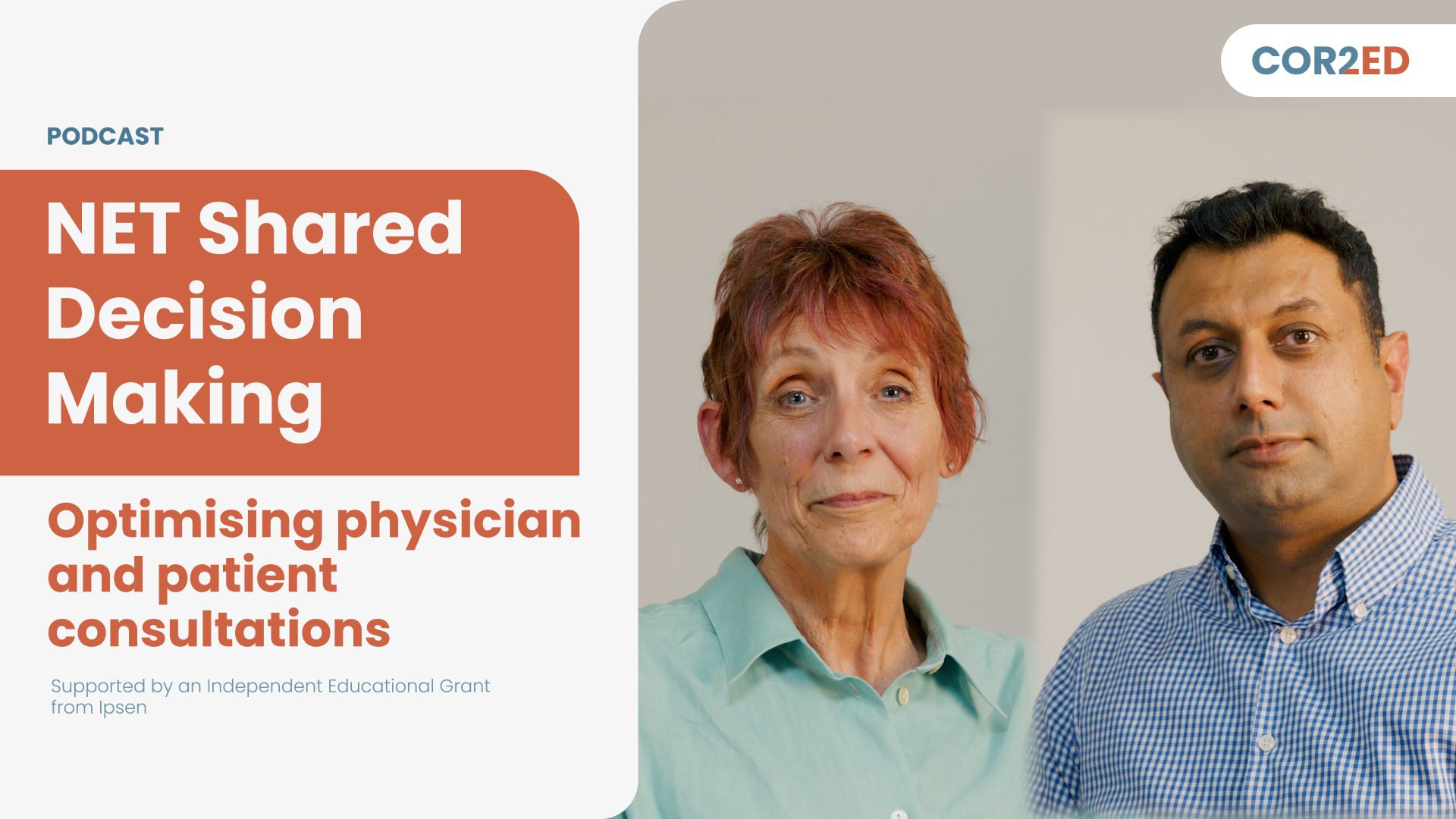Key challenges in diagnosis and management of patients with short stature conditions
Brought to you by
Prof. Philippe Backeljauw, Professor at Cincinnati Children's Hospital Medical Center and the University of Cincinnati, Cincinnati, USA
Prof. Dr. Joachim Woelfle, Chairman of Pediatrics, Director of the Department of Pediatric and Adolescent Medicine at the Friedrich Alexander University Erlangen, Germany
Please note:
PE CONNECT podcasts are designed to be heard. If you are able, we encourage you to listen to the audio, which includes emotion and emphasis that cannot be grasped from the words on the page. Transcripts are edited for readability. Please check the corresponding audio before quoting in print.
For patients with severe short stature, despite the advent of genetic testing, it is important to not lose sight of thorough history taking and examination skills, followed by appropriate testing. Do you know the key challenges in diagnosis and management of patients with short stature conditions? Keep listening to find out.
This is the first podcast episode in a two-part series on patients with rare growth disorders with short stature. In this episode we focus on differentiating between growth hormone deficiency (or GHD) and primary IGF-I deficiency (or otherwise known as growth hormone resistance).
This podcast is an initiative of COR2ED and supported by an independent educational grant from Ipsen. My colleague Tracey Gashi will moderate this podcast episode.
Tracey Gashi: Thanks, Tonke. I'm delighted to introduce to you 2 experts in the field of paediatric endocrinology. Firstly, Professor Backeljauw, who has worked in growth disorders for decades and has been involved in research and clinical management of children with severe growth disorders, including primary IGF deficiency.
I'm also joined by Professor Joachim Woelfle, who, since the start of his academic career, has had a major interest in growth disorders, first as the head of Paediatric endocrinology at the University of Bonn, in Germany, and since 2019, as the chair of Paediatrics at the University of Erlangen. Welcome to both of you.
So perhaps I can ask you first, Professor Backeljauw, to explain to us why this topic is important, and also, could you tell us the key challenges when diagnosing patients with short stature.
Prof. Philippe Backeljauw: Well, let me go immediately to the second part of your question. The key challenge is always to make an early diagnosis. It's still with the advancement in our diagnostic abilities with the advancement in molecular genetics. And so we still see many patients refer to us relatively late. So it's, you know, of utmost importance to make an early diagnosis for a child who is showing worrisome growth. And on top of that we need to make the correct diagnosis. So we can start with the correct, appropriate treatment.
Tracey Gashi: Okay, thank you. So I'd like to bring Professor Woelfle into the discussion now and ask you if I may, to comment on the key challenges regarding the management of these patients.
Prof. Joachim Woelfle: As you said, one of my interests for a long time have been growth disorders. But this comes with a drawback that for many, many years we had only limited therapeutic possibilities, which is mainly growth hormone available. And we are now in a situation where we have enlarged our portfolio, and where even more growth promoting drugs are in a pipeline. So, as Philippe said, the challenge is to make a correct diagnosis that even now there we have somewhat more therapeutic agents in hand, have the correct diagnosis which then leads to a precise therapy or management of this patient.
Tracey Gashi: So before we dive deeper into the diagnosis and management of patients with growth hormone deficiency or severe primary IGF-I deficiency, let's perhaps start with prevalence, incidence, and presentation of these patients with rare growth disorders.
So Professor Backeljauw, could you tell us more about the incidence and prevalence of these patients please.
Prof. Philippe Backeljauw: Yeah. So we have a fairly good idea of the prevalence of growth hormone deficiency. We think it's somewhere around one in 4,000.
With respect to the diagnosis of severe primary IGF-I deficiency, it's a little hard to give an exact prevalence. I've seen numbers of about one to 10 in a million.
What I can say is that growth hormone deficiency is much, much more common than severe primary IGF-I deficiency. For the latter diagnosis, there's probably several hundreds of patients worldwide, but it's an uncommon diagnosis compared to the diagnosis of growth hormone deficiency. I would also like to stress that for both diagnoses, respectively for growth hormone deficiency and severe primary IGF-I deficiency, there is a spectrum of presentation.
And, for example, in the past when we will diagnose somebody with severe primary IGF-I deficiency this would involve the more severe forms of growth delay in these patients. Whereas more recently we have discovered that there is a spectrum to severe primary IGF-I deficiency with more milder presentations which we like to call the non-classic forms of primary IGF-I deficiency.
Tracey Gashi: Thank you. So we are dealing very much with a rare disease for these patients. So, professor Woelfle, is there any treatment available for these 2 conditions at this time?
Prof. Joachim Woelfle: If you look at growth disorders in global, we are mainly distinguishing between replacement therapies on the one hand, where a hormone or growth factor is missing or lacking. And, on the other hand, supra-physiological therapies. A classic example for replacement therapy is growth hormone deficiency, where we are replacing the missing growth hormone with recombinant somatropin. And additionally this has been done by daily injections of growth hormone, subcutaneous injections.
But recently GH preparations have been developed that are now approved for the treatment in children with GHD, where it's only required to inject once weekly, so long-acting preparation, or long-acting growth hormones.
Another example of replacement therapy could be SPIGFD. Here the lacking IGF-I can be substituted by treatment with mecasermin.
However, since in many cases of SPIGFD, the classical forms, blockade in the growth hormone receptor mediated signalling is the cause of SPIGFD, IGF-I replacement can only improve the deficiency of IGF-I, but not ameliorate the IGF-independent effects of growth hormone signalling. And in addition to those 2 conditions, we have a number of therapies available, for supra-physiological therapies, which are in patients with short stature associated with other syndromal disorders, such as Turners syndrome, SHOX deficiency, children born SGA, lacking growth hormone, lacking catch up growth, and other syndromes.
Last, not least, we are now in a position where certain skeletal dysplasias can be treated by growth promoting agents, such as vosoritide, a CNP analogue, which is now approved for the treatment for achondroplasia.
Tracey Gashi: Okay. Thank you. So for the purposes of the podcast today, we're going to focus on the rare short stature disorders which have a treatment available. So we're going to be focusing on growth hormone deficiency and severe primary IGF-I deficiency for the rest of the discussion.
So in order to do understand the differences properly. Could I ask you, Professor Backeljauw to provide us with an overview of the growth hormone IGF-I signalling axis?
Prof. Philippe Backeljauw: Yeah. So what I like to describe as the growth hormone IGF-I growth plate axis is quite a complex physiologic system, but in summary when we secrete endogenous growth hormone or somatropin from the pituitary somatotropes, growth hormone circulates in the body and will stimulate the production of insulin like growth factor one, IGF-I.
There are 2 components of the IGF-I production. There's first, the production of IGF-I by the liver, and this we call the endocrine component of IGF-I.
And this IGF-I circulates in the system bound to binding proteins, of which the more important one is insulin-like growth factor one binding protein three or IGFBP-3.
Together with IGFBP-3, the acid labile subunit and IGF-I form a ternary complex that allows the IGF-I to circulate in the body and reach the different organs and tissues.
Most of growth hormones growth promoting actions are via the production of IGF-I. But what is most important in the IGF-I production is the amount of IGF-I that gets produced locally in the tissue at the tissue level, and we call that the autocrine or paracrine effects of IGF-I that are produced locally at the cellular level. And that is also true at the growth plate level, where IGF-I and growth hormone both have growth promoting actions. More specifically, GH has direct effects on chondrocytes, and both GH and IGF-I stimulate chondrocyte differentiation and proliferation in the growth plate, thus mediating linear bone growth.
Tracey Gashi: Okay, that's great. Well, thank you for that nice overview.
So turning to you now, Professor Woelfle, can I ask you to explain how these patients tend to present clinically? And we already heard before Professor Backeljauw mention that there's different grades of severity and more a spectrum of disease. So perhaps you could elaborate on that a little bit more for us, please.
Prof. Joachim Woelfle: Yeah. In theory you would expect that in some ways an easy and completely different clinical phenotype of the 2 patients. However, the distinction between GHD and primary IGFD can be more challenging than expected.
As Philippe said, there's a continuum, there's a spectrum, and this holds true as well for the production of growth hormone, where we have patients lacking complete growth hormone secretion, towards normal secretion and in patients with acromegaly even enlarged growth hormone secretion, and, on the other hand, we have growth hormone sensitivity which can be completely abolished by growth hormone receptor mutations, or which can be normal. And in both cases GHD and SPIGFD, the more severe forms can be detected or identified more easily.
For example, in congenital GHD, this is not infrequently part of combined pituitary hormone deficiency, where the patient can exhibit features such as hypoglycemia or cholestasis.
And in patients with Laron syndrome postnatally those can have certain phenotypical features, such as frontal bossing, with the prominent forehead, acromicria, have a small face, small hands, or small feet.
And in both cases I would say that growth hormone insensitivity cases with a severe form tend to have a more pronounced growth retardation, earlier than in GHD.
However, if we are looking in the less severe forms, this becomes much more difficult. Patients with partial GHD and patients with less severe form of primary IGFD may present with rather comparable growth patterns and biomarkers such as IGF-I, the endocrine form of IGF-I as Philippe just explained, do not really help to distinguish between those 2 forms. That means that both growth pattern and the biochemical profile in these less severe affected patients with either partial GHD or SPIGFD can look quite comparable.
And it's finally the result of a growth hormone stimulation test that more or less arbitrarily is dividing into 2 forms.
Genetics might help to distinguish a little bit, if you find a pre-published growth hormone receptor mutation there, you know there's a lack of growth hormone receptor signalling that might help you. However, sometimes you can stumble across mutations which are not part of the GH-IGF-I-axis, where you produce more questions than answers.
Tracey Gashi: Okay, so, Professor Backeljauw, could you tell us, how you approach the diagnostic workup of these patients?
Prof. Philippe Backeljauw: When I see a patient with short stature and or growth failure, and I need to work that patient, evaluate that patient, I put a lot of value in performing a very good, very detailed clinical exam.
But that's preceded by taking a detailed history and finding out more about the different organ systems in the patient. So we call that a review of systems that needs to be performed. So, together with a detailed history, a detailed review of systems and a well performed physical exam. One can then decide on particular screening tests that may be helpful.
Physical exam is important, auxology should be very detailed. We should look at not only height and weight, but also body segment measurements. And after that one can start considering screening for growth hormone deficiency or primary IGF-I deficiency, probably first, by obtaining a serum insulin-like growth factor one concentration, IGF-I concentration.
Sometimes we also measure an IGFBP-3 as a screening test for growth hormone deficiency. And so IGFBP-3 is rarely low in normal, short children. So both tests are appropriate screening tests. IGF-I is probably the preferred one, IGFBP-3 may be helpful in younger children.
Tracey Gashi: So can you elaborate more on that in terms of how you go about differentiating between patients with short stature, who have growth hormone deficiency and those that have short stature caused by primary IGF-I deficiency.
Prof. Philippe Backeljauw: In children, when we have a suspicion that they may have growth hormone deficiency, performing a growth hormone stimulation test and evaluating the peak {GH} concentration with various stimuli can be helpful to confirm the diagnosis.
To make a diagnosis of growth hormone deficiency, one usually deals with a low IGF-I concentration, and as confirmation performing a growth hormone stimulation test, or a growth hormone provocation test may be helpful and may teach us more about the patient's ability to secrete growth hormone.
Moreover, one cannot make a diagnosis of growth hormone insensitivity or growth hormone resistance or primary IGF-I deficiency without performing a growth hormone stimulation test during which we should see a normal peak level, peak concentration of growth hormone.
And finally, a quick word about the IGF-I generation test which some people recommend to perform if we suspect the patient has growth hormone resistance or primary IGF-I deficiency. There are also caveats related to the IGF-I generation test.
It is very difficult to assign reliable cut off values. The test consists of the administration of giving growth hormone. Before and after growth hormone, we measure IGF-I, and we evaluate how much IGF-I can be generated by exposing the patient to relatively high doses of growth hormone. There are a variety of protocols with different doses of growth hormone, different duration of the IGF-I generation test. And in general, it's not a helpful test for patients who have mild to moderate degrees of primary IGF-I deficiency. It can be helpful to confirm severe primary IGF-I deficiency, because in that situation, the IGF-I generation is minimal.
Tracey Gashi: Can I bring you back in now, Professor Woelfle, and ask you, what do you think are the main challenges that you experience when diagnosing these patients with short stature?
Prof. Joachim Woelfle: Well it is important to go one step back because one of the problems that we are still facing is a very late or too late age of diagnosis. And who is important there,
it is the primary care physician, who is in charge of what Philippe just told us, who has to deal with many patients presenting with growth retardation, with a variety of disorders which are not primarily caused by endocrine factors. Growth is an excellent biomarker of health and disease, so for the PCP it is important to take, as you said, a careful history, being aware for certain clues for medical history and physical exam. And for example, deviation from a family target height should be noted early, and the PCP should be noted to look at that in the physical exam, and certain dysmorphic features can aid in finding an underlying syndrome, and to measure the proportions of the patients might be required to identify that, because you cannot always trust your eyes and think you identify disproportion of short stature. But if you're going back to earlier identifying patients with GHD or SPIGFD, it is important that the PCP separates the wheat from the chaff.
And this remains a major challenge. We just had our national meeting of pediatric endocrinology last week in Germany, and there was one analysis of a national registry, and what we learned there was that they became better in the diagnosis of GHD, the mean diagnostic age is now around 6 years in patients with idiopathic growth hormone deficiency, and organic forms are detected somewhat earlier.
And the same holds true for SPIGFD, we published an analysis of the EU registry data that showed that treatment in non-Laron patients became a little bit better, is now around 8 or 8.5 years of age. There's Laron patients which are identified earlier, had an earlier diagnosis and subsequently an earlier treatment start. So we need to educate our PCPs, our pediatric endocrine colleagues that they are identifying patients earlier and treat them earlier.
Tracey Gashi: Okay, that's a strong message.
One of the advantages I think of having you both on the call is obviously we can get the US and an EU perspective. So with that in mind, Professor Woelfle, can you perhaps explain do you take the same diagnostic approach in Europe? Are there any other considerations that the listeners need to be aware of?
Prof. Joachim Woelfle: Well, I would say regarding SPIGFD, there's only minor differences between the Atlantic. So the definition in the US is a little bit different in terms that in the US, a level of circulating IGF-I below a cut-off of -3 SDS is required. Whereas in Europe we need or we define SPIGFD as a circulating IGF-I concentration below the 2.5th percentile, otherwise it's pretty much the same.
However, this is not true regarding a diagnosis of GHD. For diagnosis of GHD, diagnostic criteria vary greatly between countries, not only between the Atlantic or the US and Europe, but even within Europe.
Tracey Gashi: Okay, so lots of regional differences that's interesting to know. You, also mentioned earlier Professor Woelfle about genetic testing, the role of genetic testing. So you know, Professor Backeljauw perhaps you could talk to us a little bit more about that. You know, what is the role of genetic testing in this diagnostic process? And when in the diagnostic work-up, would it be considered?
Prof. Philippe Backeljauw: If we have a presumptive, biochemical or clinical diagnosis of a disorder for which genetic testing is available, it's very appropriate to confirm that diagnosis by genetic testing, and that certainly is the case for primary IGF-I deficiency. If a patient presents with severe primary IGF-I deficiency, one can have enough clinical indications to justify genetic analysis to, for example, confirm an abnormality in the growth hormone receptor gene.
But in many cases the workup does not reveal a specific diagnosis, either clinically or biochemically, and genetic screening may be quite helpful, and it has been progressively more and more introduced in our clinical practice.
We are often looking for a monogenic growth disorder, we are more likely to diagnose a monogenic growth disorder and find an abnormality if the patient has a more severe form of short stature. If there is, for example, consanguinity in the family, if the child has short stature, but also has a genetic condition, a syndrome, a genetic syndrome that can be diagnosed. And in cases of autosomal dominant short stature, we are also more likely to find a diagnosis of a monogenic growth disorder.
In many cases though, genetic testing will not find a specific cause, and we may run into what we call genetic variants of unknown significance where there is not enough proof that the mutation or the genetic abnormality that is found on testing is pathogenic. So clinicians need to be aware of this.
Tracey Gashi: Okay, so let's move on now from diagnosis more to treatments. So we've already touched on the fact that there are different treatments available for patients with growth hormone deficiency and primary IGF-I deficiency. So, Professor Woelfle, could you tell us about the treatment for growth hormone deficiency, please?
Prof. Joachim Woelfle: Growth hormone deficiencies treated now since about, the first patient was described by Maurice Raven in 1958, so it's about calculating 75 years already. But he used a human growth hormone which was extracted from cadavers. And since 85, 1985, we're in the position that we have recombinant growth hormone available which is typically applied by subcutaneous injection, which has made the management more available worldwide.
We have a relatively solid and robust knowledge on the safety and efficacy of the daily growth hormone in GHD, and we do know that if we have a proper diagnosis of growth hormone deficiency that is made early, that growth hormone is able to normalise the growth of this individual child without major adverse events, adverse effects.
Since about 2 years, as I mentioned earlier, our toolbox got a little bit larger. We have several long-acting growth hormone formulations which are now approved by EMA and FDA as well.
And the hope for that long-acting growth hormone preparations is that by reducing the need of injections from daily to weekly, that this will improve patient adherence.
This has been shown in other areas, such as in diabetes. However, currently we do not really know whether that will be the case in growth hormone deficiency. We have to prove that first.
And I would say, with the availability of more varieties of treatments available, it is the task of the clinician to counsel the families and the caregivers what might be the best solution for the individual child? One criteria might be patient age as I said, adherence is hoped to be better in long-acting growth hormone formulations and adolescents are at a slightly higher or are high-risk of being non-adherent and it might be that these will be the cases where long-acting, growth hormone formulations might be used earlier.
On the other hand, we have patients where I would be a little bit more conservative since we have a good safety profile in daily growth hormone application, and one of the patient groups where I would be conservative are pediatric cancer survivors. So we know that the physiology and the pharmacogenetics of long-acting growth hormones differ from what we see in daily growth hormone application and normal physiology. So I would argue that in these patients, I would be more hesitant and stick probably more to daily growth hormone until we know more.
Tracey Gashi: And what about the treatment for severe primary IGF-I deficiency, can you tell us about the safety and efficacy of that treatment, please?
Prof. Philippe Backeljauw: So with regards to the treatment of individuals who have severe primary IGF-I deficiency, the approved medication is recombinant human insulin-like growth factor one, recombinant human IGF-1 or mecasermin. And this preparation is also administered subcutaneously. But it's usually administered twice daily. The maximum dose is 120 microgram per kilogram per dose, again administered twice daily, and when patients are started on this treatment, they usually titrate it gradually to that dose as they tolerate it. It improves linear growth in these patients.
From an efficacy perspective, we treated a cohort of 21 individuals with severe primary IGF-I deficiency in the 1990’s and early 2000 for mean treatment duration of just under 11 years, and that the height velocity, which at baseline before treatment was about 3.1 cm per year, improved to 7.5 cm per year in the first year of treatment, and the delta height Z-score, delta height SDS at the end of treatment was anywhere from +1.6 to +2.0 standard deviations depending on whether patients had had their puberty delayed or not.
And so when you look at those data, we can definitely say that IGF-1 therapy is efficient and is the only therapy to which these patients will respond.
But it's obvious that the response to IGF-1 therapy in severe primary IGF-I deficiency is not the same as the response we observe in growth hormone deficient patients who get growth hormone replacement therapy.
From a safety perspective, it's also somewhat different. Patients with severe primary IGF-I deficiencies, such as Laron syndrome patients have as a baseline, problems with low blood sugar, with hypoglycemia in at least 40% of the patients. And so this hypoglycemia may be aggravated with recombinant human IGF-1, so we need to pay attention to this, especially in the most severely affected and the youngest patients. We need to plan the administration of IGF-1 with the intake of a meal.
The patients are also at a higher risk, with IGF-1 therapy for the development of increased intracranial pressure.
And then I probably should mention a recent warning from the FDA, that individuals both within the indication of severe primary IGF-I deficiency, and outside of the indication, when they were treated with recombinant treatment IGF-1, there was an increased incidence of both benign and malignant tumours via post marketing analysis. So IGF-1 therapy is therefore contraindicated in patients who have an active or suspected neoplasm or any condition that has an increased risk for neoplasm with a known increased risk.
Tracey Gashi: And, Professor Woelfle, how do you manage patients with primary IGF-I deficiency, and, you know, is the IGF-1 treatment indicated for all cases.
Prof. Joachim Woelfle: Internationally, I would say the approach to patients with SPIGFD differs as well. So if I look into the Pediatric Endocrine Society guideline from the US, if you have patients with non-classical forms where the IGF-I deficiency is not explained by, for example, a growth hormone receptor mutation. The PES guideline recommends to start with a trial of growth hormone first, before initiating IGF-1 in these patients. In Germany, this would be off-label, we wouldn't be able to do that. So taken together, yes, I would carefully counsel the family about the efficacy and the safety of the of IGF-1 treatment but in addition, I would underline the importance of collecting the patient's data in a registry that we learn more and have a better database to counsel these patients.
Tracey Gashi: Absolutely. So thank you. I think we've had a very comprehensive discussion, so I'd like to thank you both very much for sharing your insights for our listeners on this topic.
We always like to end our episodes by providing the listener with the key clinical messages of your discussion for them to take away. So can I ask you, Professor Woelfle what would be your main clinical messages that you'd like our listeners to remember after this podcast?
Prof. Joachim Woelfle: As we discussed for both GHD and SPIGFD, the late age at diagnosis and the late treatment start is a problem. And we already talked that we need to educate our community, pediatric endocrine specialists as well as primary care physicians to make an earlier diagnosis. So this is important.
And with the availability of more than one treatment option for growth hormone deficiency, we have to make a comprehensive counselling of the families. What are the advantages regarding safety, safety knowledge, and what are the potentials of the newer drugs available? And as I just said, we need to collect the data of the treated patients in our databases to learn more about long-term safety and long-term efficacy.
Tracey Gashi: Thank you. And Professor Backeljauw, have you anything to add to that?
Prof. Philippe Backeljauw: As I've alluded to, I think, for patients who present with severe short stature, despite the gradual introduction of genetic testing, I think it's still important not to lose sight of having good history taking skills and good examination skills, followed by appropriate testing. I think we further need to have a good understanding of all the caveats that come with biochemical testing as well as genetic testing. And I think we should prescribe treatments within the limits of the indication for both growth hormone deficiency and severe primary IGF-I deficiency.
And as physicians, we need to be aware that the caregivers should be well informed about the treatment, the expectations they can have from an efficacy perspective and the safety.
Tracey Gashi: Thank you again for this episode. We've learned a lot in the discussion on rare growth disorders with short stature. Thank you.
If you liked this podcast episode and want to find out more on short stature and particularly severe primary IGF-1 deficiency, then look on the Rare Diseases Medical Conversation Podcast channel from the COR2ED medical education account for the other episode with Prof. Helen Storr and Prof. Andrew Dauber. Also don’t forget to subscribe to the channel, rate this episode, or inform your colleagues about it. Thank you for listening and see you next time.
This podcast is an initiative of COR2ED and developed by PE CONNECT, a group of international experts working in the field of endocrinology and pediatrics. The views expressed are the personal opinions of the experts. They do not necessarily represent the views of the experts' organisations, or the rest of the PE CONNECT group. For expert disclosures on any conflict of interest please visit the COR2ED website.




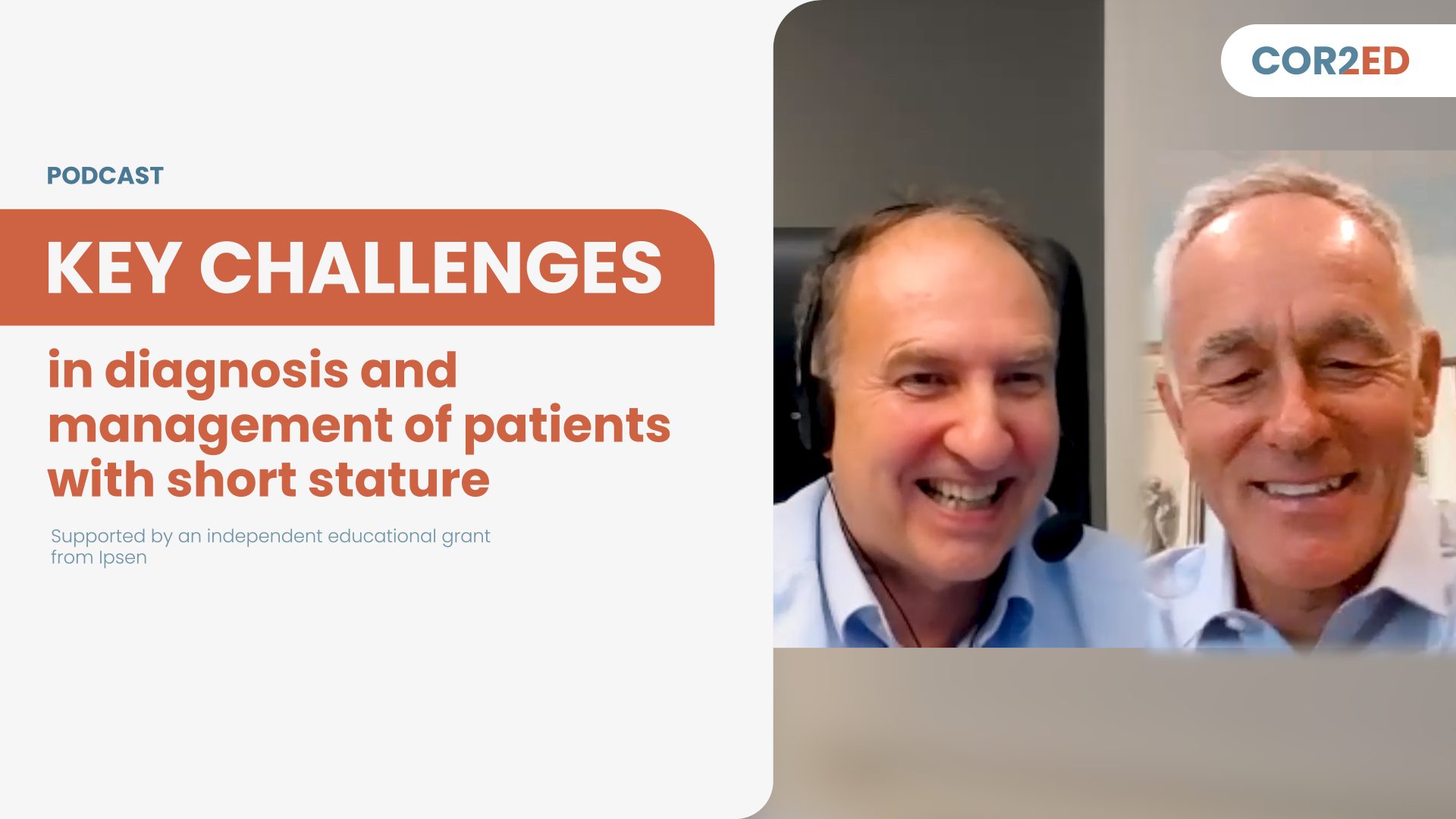

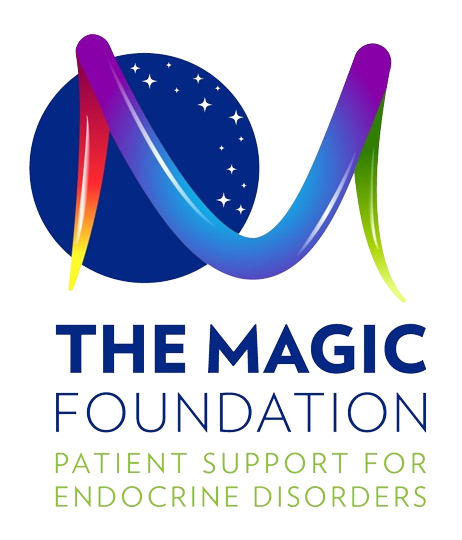
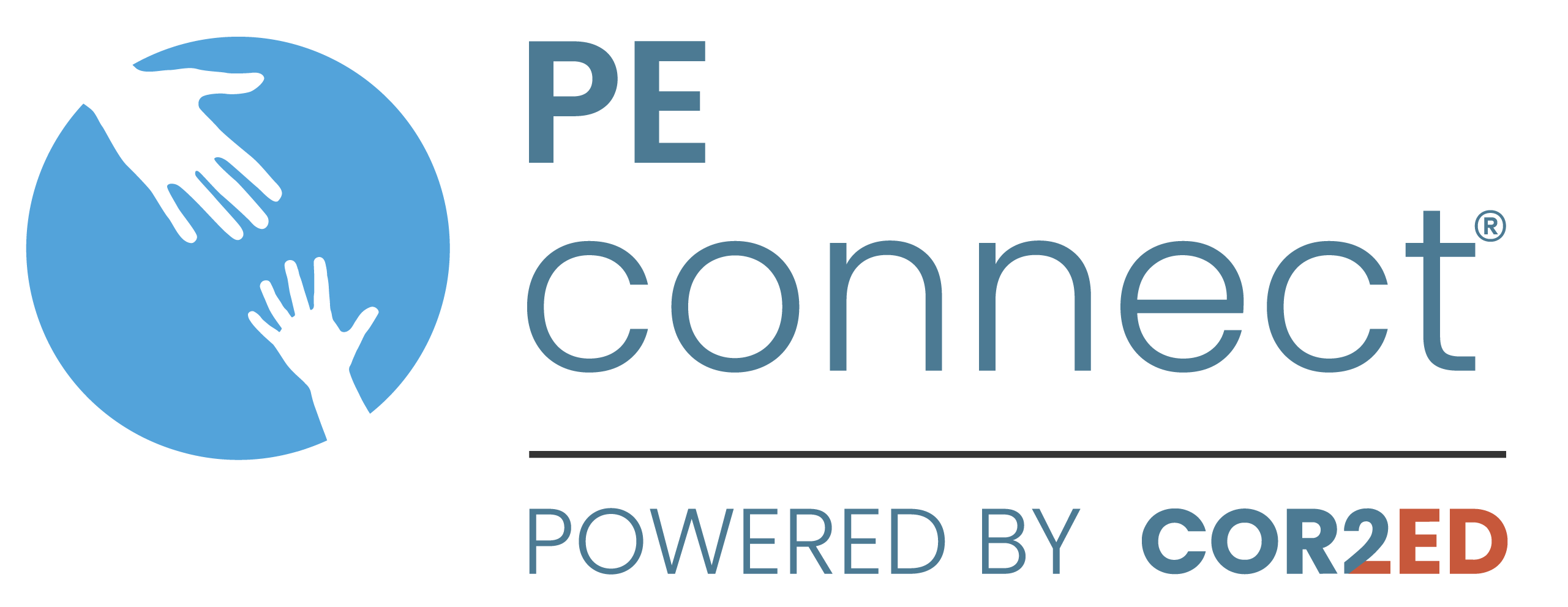
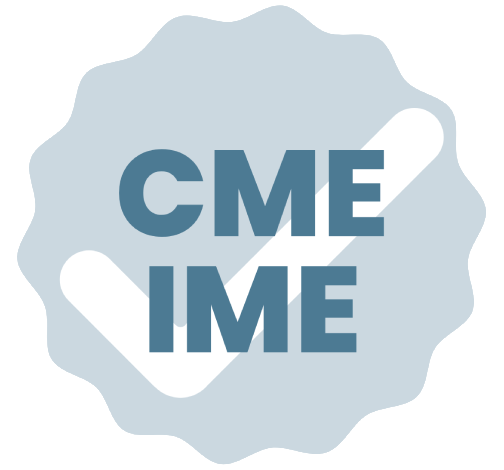
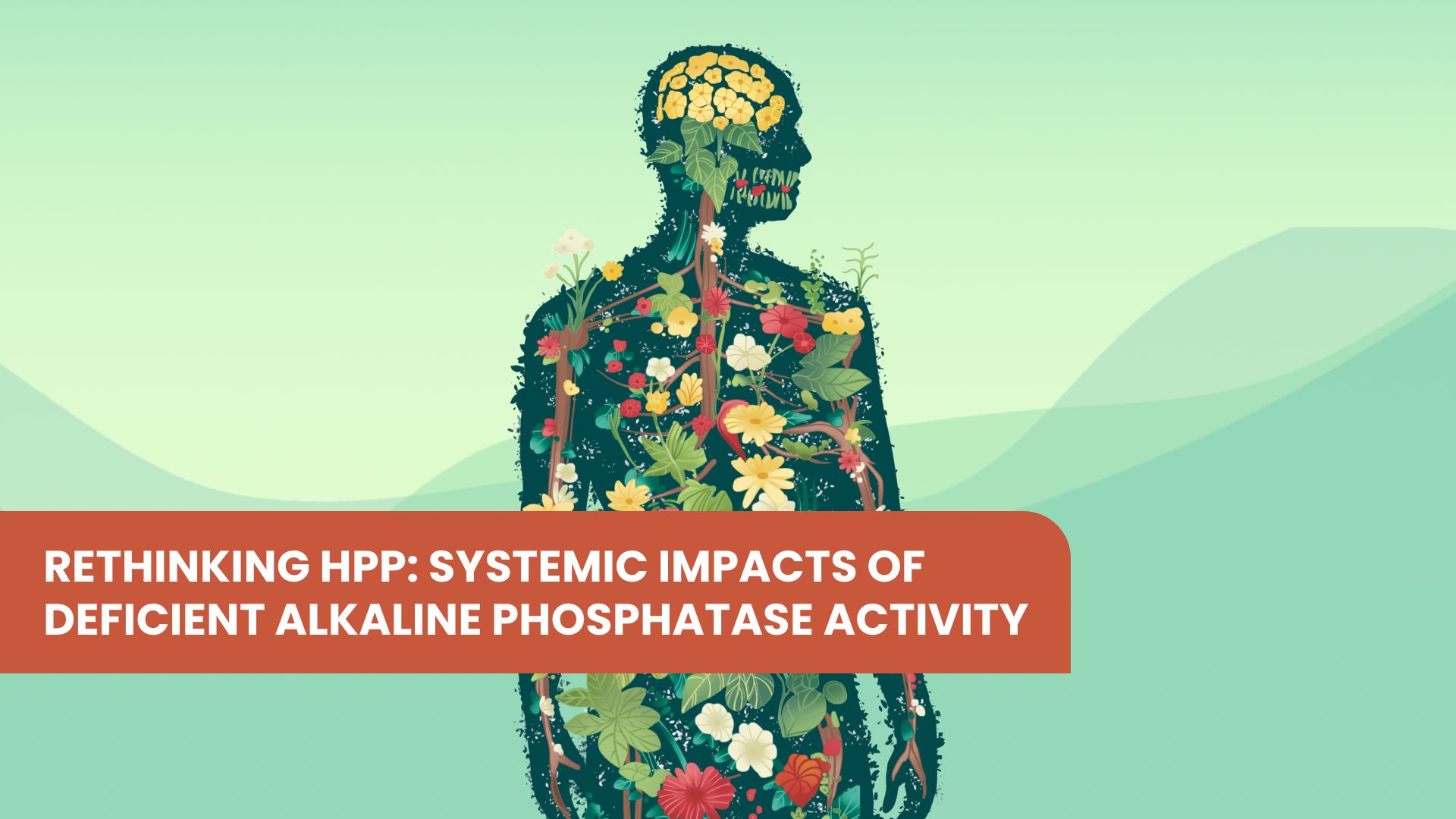
 4 MIN
4 MIN
 May 2025
May 2025 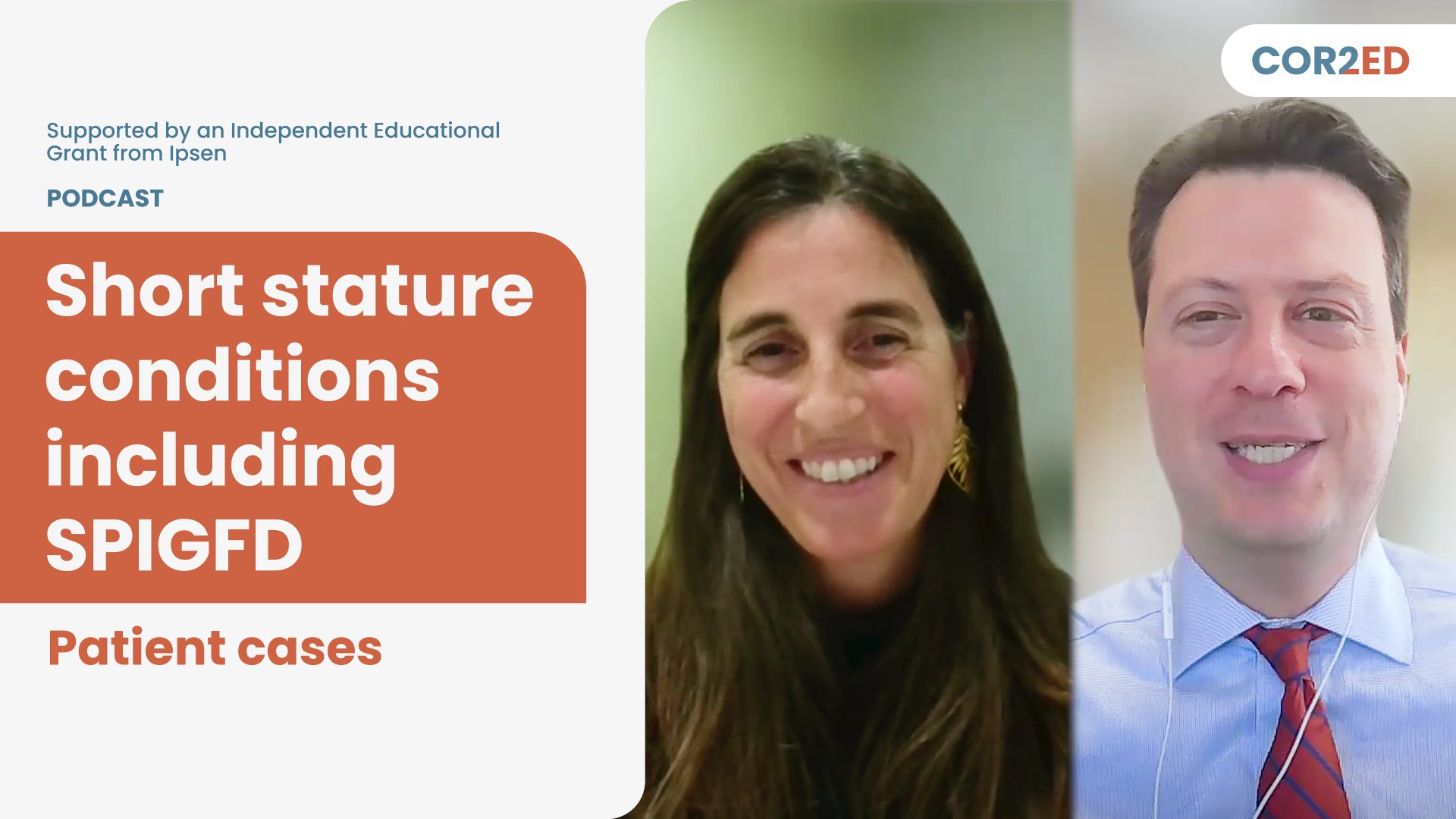
 Downloadable
Downloadable 